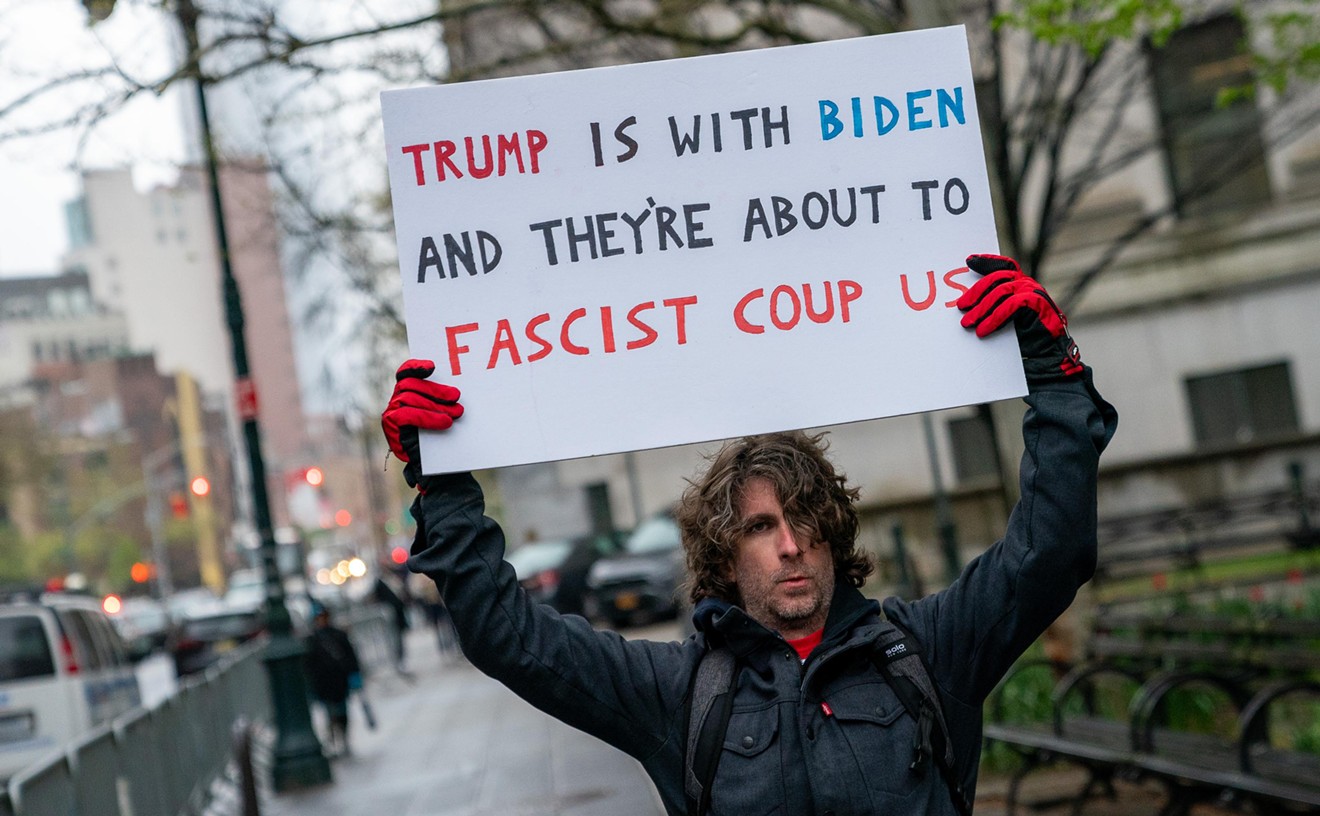Everyone in the neighborhood has been supportive of the efforts, says Schenley Park resident Rick Leitner -- save for one glaring exception, the owner of a 2.5-acre property surrounded by an eight-foot fence that's topped with barbed wire and overgrown with climbing weeds. Left unattended, the weeds have also engulfed the sidewalk, creating a hazard to pedestrians. Leitner and others say they complained to the owner about the unsightly state of affairs, but to no avail.
And who might this incorrigible slob be?
None other than the City of Coral Gables, that bastion of good residential grooming and civic anal-retention.
"You would never guess it was owned by the city, because they'd never allow something like that in Coral Gables," Leitner marvels.
The property, located at 5840 SW 34th St., has served as the city's nursery for at least 40 years; in addition to flowering plants, more than 500 trees, including palms, gumbo-limbos, and oaks are grown there year-round. "The place is a mess," complains Yolanda Martin-Hidalgo, who lives next door. "If these people are here, they should be cooperating in keeping things clean like in Coral Gables. But they don't give a damn. A palm will fall down outside the fence and they won't pick it up for weeks.
"A lot of the time they have all kinds of people working there," Martin-Hidalgo goes on. "They say bad words. The trucks are coming in all the time and they make a loud sound." She demonstrates the annoying beep-beep-beep.
Dan Keys, director of Coral Gables's Special Service Department, which is responsible for the nursery's upkeep, says the city's intent is to keep a low profile. "We like to keep it anonymous," he posits. "Most people don't know it's there. It's in a residential neighborhood that is not prone to theft."
Assistant City Manager Sandy Youkilis admits the city has been caught with a limp weed-whacker. "There is no question that we have not kept that area up like we should," he concedes, adding that projects in the city have taken precedence. "Our priority has always been to use our money inside Coral Gables, for Coral Gables residents. Whether it's extra money for sidewalks or streets or capital-improvement projects like the parking garage and the youth center, we've spent it in the city."
Youkilis says that although the county has never cited the nursery for code violations, city officials are pondering whether to allocate funds for improvements during next month's budget hearings. "We're ashamed of the way it looks, and we are going to make every effort to clean that up," he vows. "Some cities won't admit when they're wrong, but we're not that kind of city. When we do something wrong, we fix it."
In the early Thirties, the site was actually within the Coral Gables city limits, part of a 600-acre tract known as the city's western section, which stretched all the way to Southwest 75th Avenue. In 1934 Coral Gables forfeited the bulk of the acreage as part of a settlement of a tax dispute with Dade County, a transfer that moved the city's western boundary to Red Road. Coral Gables still retains ownership of 30 acres east of 75th Avenue, as well as the 2.5 acres that have become the nursery's home.
A push for annexation in April 1995 initiated by the Schenley Park Homeowners Association might have added the entire neighborhood -- including the nursery -- to the city's tax rolls, had it been approved by Gables and Metro commissioners, but the proposal was killed by opposition from Schenley Park residents concerned about increased property taxes and tougher municipal laws. "The county is not as strict as we are about code enforcement," Youkilis explains.










